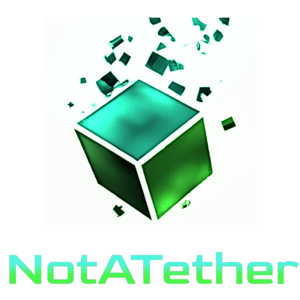The following content was written by Red on August 06, 2010, 03:50:10 AM in the thread Bitcoin minting is thermodynamically perverse. All content is owned by the author of the bitcointalk.org post. (original)
Nicely written gridecon. I completely agree.
I’ve been considering posting a similar critique but you’ve laid the issue out clearly. if you don’t mind I’ll add my thoughts here.
As the minting process and the transaction recording process are one, there is really no reason to separate them. I don’t disagree with knightmb’s points at all. But I do think that is is really important to point out that all that CPU power and electricity usage is absolutely NOT required for the task at hand.
Generating blocks serves three critical but independent functions in the bitcoin system.
1. It permanently records valid transactions in a roughly chronological order.
2. It creates *consensus* among all nodes on what transactions took place and when, WITHOUT relying on a central authority. That was a hugely clever breakthrough.
3. It trickles bitcoins into circulation at a regularly scheduled rate. (roughtly 50 BTC/10 min) Also a nice motivational trick.
However, all of these required tasks could be done in a much more efficient manner.
Generally in a P2P system, if you add more nodes then the necessary machine resources needed per node decrease. (for a given usage level of the service)
However, if we add more nodes to the bitcoin network the necessary machine resources needed per node increase. This is true of CPU usage and network bandwidth.
Satoshi already pointed out that the goal of this is not to scale to millions of pure P2P nodes. But instead to have thousands of transaction checking peers each having thousands of clients. That means the goal is to create core “central authority” of peer nodes each of which is trusted by some clients, but the core peers do not necessarily need to trust each other. This is a absolutely critical design construct if the current implementation of bitcoin is expected to scale to millions of traders.
However, there are other design possibilities that could meet each of these three critical goals without exponential growth in resources utilization.
Implementing the transaction graph using a redundant distributed hash table comes to mind. This could be done with or without a core of central peers. Another possibility would be just to store the transaction graph in a SQL database and use database replication among the core peers. Either of those satisfies goal 1 and 2 using minimal system resources.
Goal 3 is implementable by simply generating a distributed shared secret, then using that shared secret as a concensus random node to send 50 BTC to.
I agree with gridecon that such an implementation would out compete the current implementation. Even if it otherwise following exactly the same external behavior and transaction validation rules.
The following content was written by gridecon on August 06, 2010, 03:53:24 AM in the thread Bitcoin minting is thermodynamically perverse. All content is owned by the author of the bitcointalk.org post. (original)
I understand that bitcoin’s utility as a currency is independent of the method of minting – that is crucial to what I’m trying to express. My claim is that the positive properties of bitcoin’s security could be implemented using a different method of minting, and that users will likely gravitate to currencies with whatever they believe are the most fair and efficient minting systems.
Maybe an even simpler way to put it is that I think that it is a huge waste of resources to generate a digital currency by doing fundamentally useless computational work. If you want to regulate currency production in this way, it should be done “parasitically” on top of useful computation, such as that done by distributed computing research projects.
Let me make an analogy that I believe is actually very close to the current truth of the matter. The current method of coin minting is similar to a currency based on photographs of burned wheat. People grow wheat, burn it, and take photos of the burned wheat to prove that it was really grown and burnt, and then use the photographs as a medium of exchange. Does that sound sensible? No, and fundamentally it is just as senseless to waste potentially useful computer cycles on calculating the hash of random data until you hit the winning number.
The following content was written by MoonShadow on August 06, 2010, 04:51:07 AM in the thread Bitcoin minting is thermodynamically perverse. All content is owned by the author of the bitcointalk.org post. (original)
Go for it. In the meantime, I think that you both miss some fundamental truths.
1) The point of the system is not to ‘mint’ coins at a high energy cost, but a high computational cost, to protect the system no matter how high Moore’s law may go.
2) The award of bitcoins is not ‘minting’ really anyway, it is an award by lottery for participating in the strenghtening the currency. Those 50 bitcoins already existed from the moment that the rules were conceived and the process set into motion. They are just distrubuted from the original owner in a systematic manner.
The computations are a neccessary part of keeping the system strong and confidence high, and are a small price to pay when compared to the costs that we all incur from the administration of fiat currencies. I think that it was a brilliant idea.
The following content was written by Insti on August 06, 2010, 08:30:23 AM in the thread Bitcoin minting is thermodynamically perverse. All content is owned by the author of the bitcointalk.org post. (original)
I don’t accept that.
The idea that the value of a Bitcoin is in some way related to the value of the electricity required on average is a fallacy that has been widely spread by armchair economists to get-rich-quick merchants who don’t understand the system.
It’s not about the minting at all.
The computation required is to maintain the integrity of the system by growing the block chain which serves as a ‘timestamp’ of transactions.
It is probably possible to make the computation required for this process less than it currently is, but it would be at the expense of disk space or bandwidth or integrity or processing power required to validate transactions, or all of the above. The current system provides a good balance of all these things.
The minting is just a side effect, and an elegant way to reward those who have contributed processing power to the integrity of the system.
There are many other threads that try to propose ‘better’ ways of rewarding these contributions, but the ‘winner takes all’ system is the one we have at the moment.
Good luck with implementing compucoins..
Again, it is not about the minting
The following content was written by gridecon on August 06, 2010, 09:24:47 AM in the thread Bitcoin minting is thermodynamically perverse. All content is owned by the author of the bitcointalk.org post. (original)
I understand the bitcoin is not INTENDED to be about the minting. The essence of my criticism is that a digital currency SHOULD NOT be “about the minting” but the current bitcoin system works against that goal! My argument is that the current minting system limits the utility of the currency largely because entirely too much attention is focused on “winning the block generation lottery” and the process of choosing these winners is highly inefficient and resource intensive. If potential users of the currency believe that bitcoin is simply a way for botnet herders to convert spare cpu cycles into cash, they are unlikely to participate in the emergence of the economy. The current system could easily result in the perception that bitcoin is basically being used as a vector for the indirect monetization of the theft of electricity via compromised computer systems. I assume most people interested in bitcoin understand that self-interested individuals will obviously seek to exploit opportunities like this, and the design of a popular currency has to prioritize how a prospective user will evaluate its fairness.

